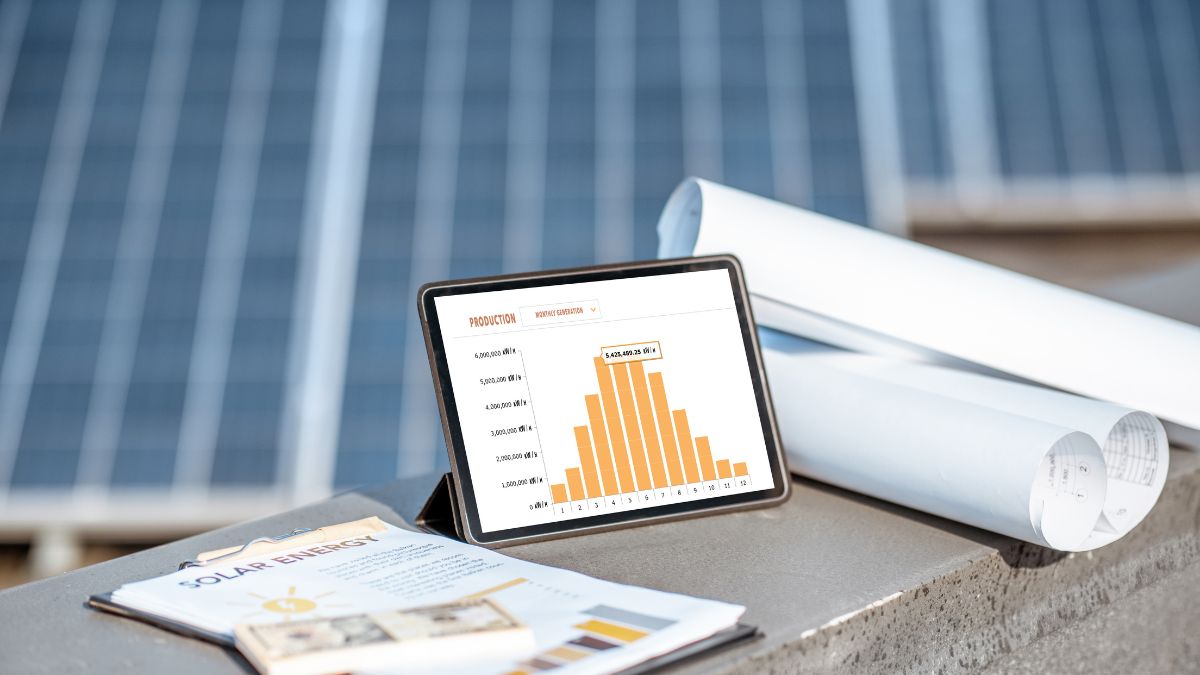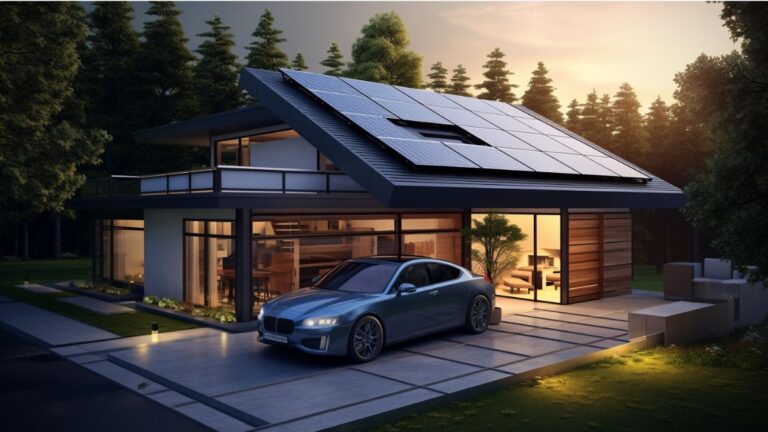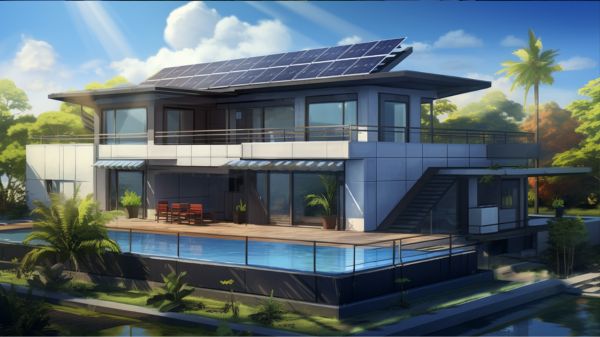Boost Profits in Construction: Find the Ideal Solar System Size with Simple Calculators!
As the world continues to grapple with the effects of climate change, there is an increasing demand for sustainable solutions. In the United States, several states, including California, are making solar systems mandatory in new builds. Incorporating solar systems in a building not only promotes energy efficiency but can also attract more buyers, increase profits, and sell homes faster.
However, choosing the right system size is crucial for efficiency and profitability. Builders need to consider several factors when choosing a solar system for a new build, including the building’s location, size, and energy consumption. Predicting future owner’s energy consumption can be challenging, but power consumption calculators are available to help in making an informed decision.
In this article, we explore how builders can use power consumption calculators to determine the right system size for new builds, design for future expandability, and the types of solar systems available for installation. We also discuss the tools available for system sizing and offer a free consultation for builders looking to incorporate solar systems in their projects.
Key Takeaways
- Solar systems are becoming mandatory in new builds in several states, and builders can attract more buyers, increase profits, and sell homes faster by incorporating solar systems.
- Choosing the right system size is crucial for efficiency and profitability, and while system sizing calculators are available, predicting future owner’s energy consumption is a challenge.
- Working with an architect, considering expandability, and estimating future owner’s energy use based on common appliances and HVAC needs can help determine the right system size.
- Grid-tie systems are the most cost-effective way to utilize solar energy, while off-grid systems require consideration of battery bank size and storage capacity. Power consumption calculators can help determine system size and production parameters.
Solar Systems for New Builds
Incorporating solar systems in new builds has become mandatory in several states, including California, and offers builders the potential to attract more buyers, increase profits, and sell homes faster by choosing the right system size, which can be determined through the use of power consumption calculators and consideration of future energy needs.
Solar systems have gained popularity among homeowners due to their cost savings and increased home value. By incorporating solar systems in new builds, builders can create a competitive edge in the real estate market, attract eco-conscious buyers, and potentially increase profits.
However, choosing the right system size is crucial for both energy efficiency and profitability. Builders can use power consumption calculators to determine the optimal system size for their new builds. Predicting the future owner’s energy consumption can be a challenge, but working with an architect and considering expandability can help determine the right system size.
By factoring in future power consumption increases and designing for future expandability, builders can ensure that their new builds remain attractive to potential buyers for years to come while minimizing solar system cost and maximizing energy efficiency.
Related Article: How To Make The Most Out of Solar Power.
Choosing the Right Size
Determining the appropriate system capacity is crucial for optimizing energy efficiency and minimizing operating costs, as evidenced by the fact that undersized solar systems result in a 34% reduction in energy production.
While system sizing calculators are available, predicting future owners’ energy consumption can be challenging. To overcome this obstacle, working with an architect and considering expandability can help determine the right system size.
Future owner’s estimated energy use can be estimated based on common appliances and HVAC needs, and future power consumption increases should also be considered when determining system size. An expandable system design allows for future needs and ensures attractiveness to potential buyers.
However, space constraints, inverter limits, and battery banks should be considered for expandability.
Designing for future expandability is a key factor in ensuring that the solar system will continue to meet the needs of the homeowner as energy consumption patterns change. An expandable system design allows for the installation of additional solar panels and storage capacity, as well as the ability to upgrade the inverter or battery bank.
This approach ensures that the system can continue to meet the energy needs of the homeowner as their energy consumption patterns change or as they add new appliances to their home. By choosing an expandable design, builders can provide their clients with the flexibility and convenience that they need to enjoy the full benefits of a solar system.
Tools for Sizing
Power consumption calculators are one of the available tools that can aid in the optimization of solar system sizing and energy production parameters. These calculators use various factors such as location, sun exposure, and energy usage to determine the appropriate system size. They can help builders and architects determine the correct number of solar panels needed to generate enough energy to power the building’s needs.
Additionally, calculators can also help predict future energy consumption needs, based on factors such as the number of occupants, appliances, and HVAC systems. Design considerations are crucial when using power consumption calculators to determine the right system size. An expandable system design allows for future needs, ensuring that the system can be upgraded if energy requirements increase in the future.
However, space constraints, inverter limits, and battery banks must be considered when designing an expandable system. This type of forward-thinking design not only benefits future occupants of the building but also increases the attractiveness of the building to potential buyers, as it demonstrates the building’s adaptability and sustainability.
Related Article: Stay Away From Solar Power Scams.
Conclusion
Solar systems are becoming mandatory in new builds in many states, including California. Incorporating solar systems in new builds can attract more buyers and increase profits. However, choosing the right system size is crucial for efficiency and profitability.
Power consumption calculators are available, but predicting future owner’s energy consumption can be challenging. Builders can use these calculators to determine the right system size for new builds and design for future expandability.
When choosing the right size for a solar system, builders need to consider factors such as the size of the home, the number of occupants, and their energy consumption habits. By using power consumption calculators, builders can determine the right size for the solar system and save costs. These calculators can also help builders design for future expandability, allowing homeowners to upgrade their system if needed.
There are different types of solar systems available, including grid-tied, off-grid, and hybrid systems. Builders can choose the system that best suits their needs and budget. Additionally, there are several tools available for system sizing, such as the National Renewable Energy Laboratory’s PVWatts calculator.
Builders can also consult with solar experts for a free consultation to determine the right system size and design for their project.
In conclusion, incorporating solar systems in new builds can attract more buyers, increase profits, and sell homes faster. Choosing the right system size is crucial for efficiency and profitability. Builders can use power consumption calculators to determine the right system size for new builds and design for future expandability. By utilizing the right tools and consulting with experts, builders can boost their profits with solar and contribute to a sustainable future, one home at a time. Just like solar energy, making the right choices in life can lead to a brighter and sustainable future.







One Comment
Comments are closed.